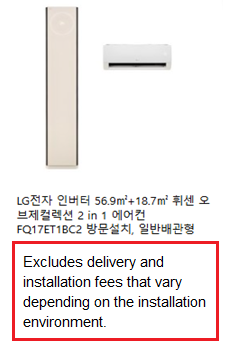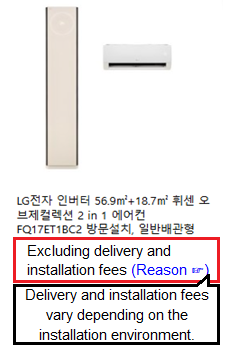On February 14, 2025, statutory amendments strengthening regulations on so-called “dark patterns” took effect, both in the Act on Consumer Protection in Electronic Commerce, Etc. (“E-Commerce Act”) and its enforcement decree and rules (“Enforcement Regulations”). The amended Enforcement Regulations (i) provide additional information on e-commerce providers’ obligations regarding certain types of dark patterns, and (ii) establish detailed criteria for imposing business suspensions and fines for non-compliance with these obligations. The Korea Fair Trade Commission (“KFTC”) has also published a Q&A document regarding the regulations on dark patterns under the amended Enforcement Regulations to provide guidance to market participants.
Key aspects of the amended Enforcement Regulations and the Q&A document are as follows.
|
1. |
Obligations and Penalties Related to Dark Patterns Under the E-Commerce Act |
|
(1) |
Detailed Regulations on Dark Patterns |
|
(2) |
Detailed Criteria for Business Suspension and Fines |
|
|
First Violation |
Second Violation |
Third Violation |
|
Business |
3 months |
6 months |
12 months |
|
Administrative Fine |
KRW 1 million |
KRW 2 million |
KRW 5 million |
|
2. |
Key Details of the Q&A Document |
-
Hidden Renewals - Requires consumer consent within 30 days before the payment date when increasing the subscription fee or converting a free service to a paid service.
|
– |
Starting point: If a one-month free trial starts on May 1 and will convert to a paid subscription on June 1 under a contract, the e-commerce provider should obtain consumer consent within the 30-day window before the payment date of June 1, which would be from May 2 to May 31. |
|
– |
Scope of consent: Even if the e-commerce provider already obtained prior consent from consumers at the time of the initial contract, and even if the discount or free trial period is less than 30 days, the provider still must obtain separate consent within the period prescribed by law. |
|
– |
Method of consent: Explicit consent is required in writing (this may include electronic documents or pop-up notices). If the terms of service provide for “deemed” consent based on the failure to opt-out, this may be construed as invalid under the Standardized Contract Regulation Act. |
|
– |
Exemptions: The consent requirement does not apply if an e-commerce provider decides to revert to the original price, after providing a one-time discount or free service period as part of a promotion to a consumer who had already been paying a regular subscription fee. |
-
Gradual Disclosure of Costs - Requires displaying or advertising the total amount that must be paid on the first screen that refers to the price, and if there are justifiable reasons for not revealing certain costs that would affect the final price, those items and their reasons must be disclosed.
|
– |
First screen: This refers to the initial screen that displays information on products and prices to attract purchases (e.g., the search results page when searching for a product, the category page that appears upon clicking a particular category, or when specific product information with prices is displayed on the initial page or a banner). |
|
– |
Total amount that must be paid: This includes all costs that the consumer must pay to make a purchase or use the service, such as shipping fees, installation fees, and taxes (like VAT). |
|
– |
Justifiable reasons: This refers to cases where it is difficult at the outset to list the total amount to be paid because the price changes depending on options to be selected (e.g., shipping fees, installation fees). |
|
– |
Method of disclosure: In principle, all pricing information must be disclosed on the first screen. However, on search results pages with limited space, it is sufficient to indicate only the excluded cost items and provide a direct link to a separate page to provide the justifiable reasons. (Please refer to the example below excerpted from the KFTC’s press release dated February 10, 2025.) |
|
– |
Grace period: The KFTC will provide a grace period of six months from the effective date of February 14, 2025, intended to encourage voluntary compliance and self-correction. |
|
Where There Are No Spatial Constraints |
Where There Are Spatial Constraints |
|
|
|
-
Pre-selection of Purchase Options - When providing an option asking consumers whether they intend to subscribe, e-commerce providers should not induce subscription by pre-selecting “Yes.”
|
– |
Providing options: This refers to asking about the intention to purchase, subscribe, or enter into a contract. Pre-selecting the option to (i) purchase recommended items or (ii) apply additional options, constitutes “inducing” subscription. However, pre-selecting merely for consumer convenience (e.g., pre-selecting a past delivery address or allowing consumers to set defaults) does not. |
-
False Hierarchies - When presenting options related to purchasing, e-commerce providers should not use visually conspicuous designs to highlight options that are unfavorable to consumers.
|
– |
Presenting options: This is limited to options concerning purchasing, subscribing, entering into contracts, or canceling, withdrawing, or terminating, and is distinct from simply displaying ads or providing information. |
|
– |
Visually conspicuous difference: This is limited to cases where each option is not presented in a uniform or non-discriminatory manner, such as when the color of a specific option appears faded, the font size or checkbox is smaller than the others, or when certain checkboxes are difficult to locate. |
-
Obstruction of Cancellation or Withdrawal - Without justifiable reasons, e-commerce providers should not (i) design the procedures for cancellation, withdrawal, or termination to be more complicated than those for purchasing, subscribing, or entering into a contract, or (ii) require a cancellation, withdrawal, or termination process that is different from the one for purchasing, subscribing, or entering into a contract.
|
– |
Justifiable reasons: This refers to unavoidable circumstances such as procedures required by law, or procedures for settling accounts after termination. |
|
– |
The complexity of procedures: This is assessed comprehensively considering the specific circumstances, by comparing (a) the number of steps for purchasing, subscribing, or entering into contract procedures and the number of steps for cancellation, withdrawal, or termination procedures (quantitatively) and (b) the accessibility of links to access each procedure (qualitatively). |
-
Repeated Interference - E-commerce providers should not repeatedly request consumers to change a selection or choice they have already made.
|
– |
Selection or choice consumers have already made: If the consumer did not select any options and pressed “Close window” or “Notify me later,” nothing has been selected or chosen. However, if only the option to consent is provided and the option to refuse is not available, clicking on “Close window” may be interpreted as a refusal. |
|
– |
Methods of requesting changes to selections or choices: This includes re-displaying the same selection or confirming intent to change through a pop-up window. Even if the purpose is to confirm consumer choices or providing information, if the consumer is repeatedly asked to confirm their choice, it may be interpreted as requesting consumers to change their selection/choice. |
|
– |
Exception: E-commerce providers may repeatedly request consumers to change their selection or choice, if the providers enable the consumers to choose not to receive such change requests for at least seven days. |
|
3. |
Implications |














